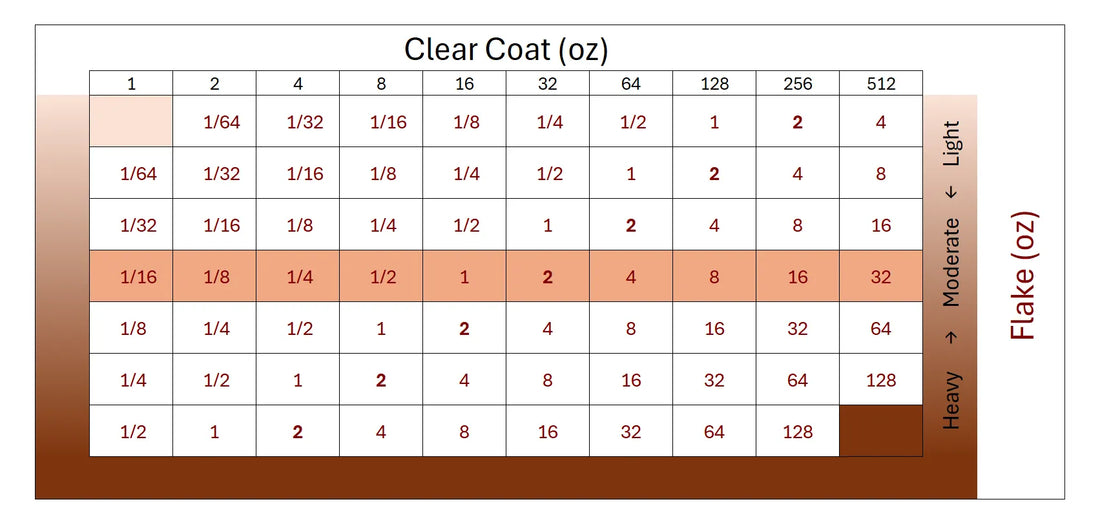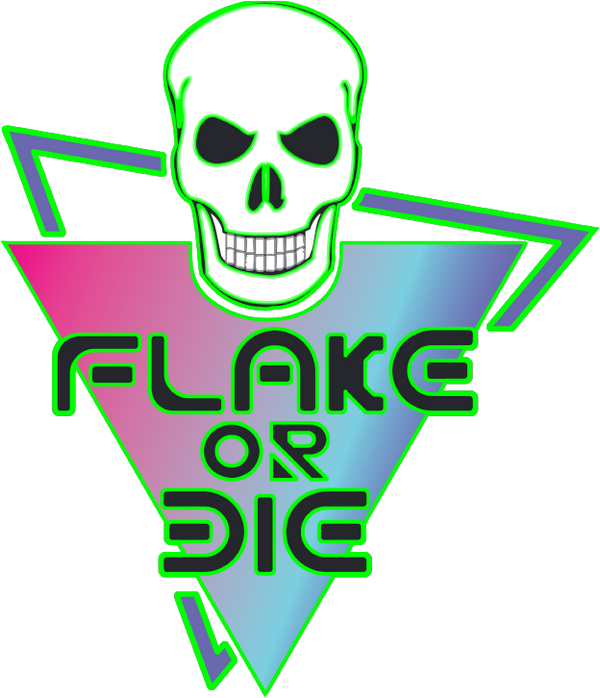
How to Mix and Measure Metal Flake to Create Custom Paint colors
Share
Adding metal flake to clear paint bases is a simple and effective way to create custom, sparkling finishes for a wide range of projects. Whether you’re working with enamel, urethane, acrylic, or oil-based paints, incorporating metal flake can transform the look of your project, giving it an eye-popping flash. This guide will help you through the process and provide a reference form for mixture percentages to get your perfect flake effect.
Select Your Clear Paint Base
Choose a clear paint base that suits your project. This could be enamel, urethane, acrylic, or oil-based. Ensure that the paint base you select is compatible with the surface you intend to paint. You want a clear base paint so you do not hide or mute your metal flake.
Choose Your Flake
Metal flake is available in a variety of colors, sizes and effects; choose the right one for your project.
Color: Select a flake color that complements the base color or finish if you are trying to achieve a subtle flash. Choose a contrasting color to make your flake stand out against your base paint.
Size: Choose a size appropriate to your project size. Large projects can use any size flake. On a large project smaller flake will add a general shimmer to complement or contrast your base coat. Larger flake particles on a large project will add a big flash of reflective light and color to make a bold impact. If you are painting a smaller project, scale the flake size to match the size of your paint surface. (i.e. A small flake on a model car will look like a large flake on full scale car.)
Effect: Holographic flakes add a prismatic rainbow effect to the general flake color. Iridescent flake offers a muted prismatic effect, generally enhancing the range of the base color. Blending metal flake sizes and colors creates a custom color and flash profile. You can also layer flake for variable effects. (I.e. you can lay down a mid to heavy volume of small flake for a blanket flash, then add a thin coat of larger flake for a bit of variable pop.)
Mix the Flake and Clear
It's a custom paint job; there are no right or wrong answers.
At Flake or Die, we recommend a starting point of 1 package (2 oz of flake) to 1 quart of clear paint base. If you're making a metal flake blend, you can pre-blend and then mix with your clear paint in your desired ratio.
To help you achieve the perfect mixture, here’s a quick reference for various mixture percentages based on the 2 oz metal flake to 1 quart clear base as a moderate starting point:

Printable project specific guides at end.
Light Flake: This is great if you want just a hint of flash without overwhelming the underlying paint color. This effect is very dependent on flake size. A light coat with smaller flake has a subtle flash, where larger flake can create a speckled look when spread thin.
Moderate Flake: The middle of the road; it will give you a reflective flash that works well for most projects where you want the effect to be noticeable but not overwhelming. Flake size can enhance (large flake) or mute (small flake) the light reflective flash effect to further customize your final paint result.
Heavy Flake: For when you want all the attention; go big or go home! Heavy flake coverage or large flake particles are for dramatic effects that are meant to be a focal point. Heavy coverage of smaller flake will create a shimmery blanket effect. If the flake is very large, you’ll need to cut the coverage to avoid glops and blobs.
Tips for successful painting
Test: Always start with small test batches before committing to large quantities. This will allow you to adjust the metal flake amount to your exact preferences. Testing is great for custom flake blending or layering as well. Test out blends and/or layers of flake to learn how the colors and sizes interact with each other.
Adjust Consistency: Depending on how you're applying the paint (spray, brush, etc.), you may need to adjust the consistency of the mixture. Thin your mixture with the appropriate solvent to get the flow you need. When spraying you want to avoid clogging your nozzle, test for the right flow to avoid splutters. If you are painting your flash on canvas, you can adjust the flow of the paint to meet your technique (brush, spray, pour, etc.). If you’re working on a vertical surface you will want to avoid runs, metal flake will add weight to your paint. You might try layering or dry flaking to get big flash on vertical surfaces.
Adding metal flake to clear paint bases opens a world of possibilities for creating stunning finishes that reflect the light in beautiful ways. By adjusting the flake-to-base ratio, you can customize the intensity of the effect to suit your project needs. Whether you're working on automotive finishes, custom guitars, hobby crafting, or home décor, metal flake paints will provide that extra touch of elegance and shine.
Large Project Card (Automotive)
